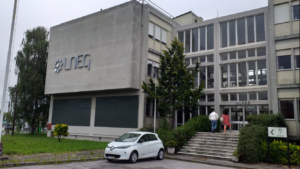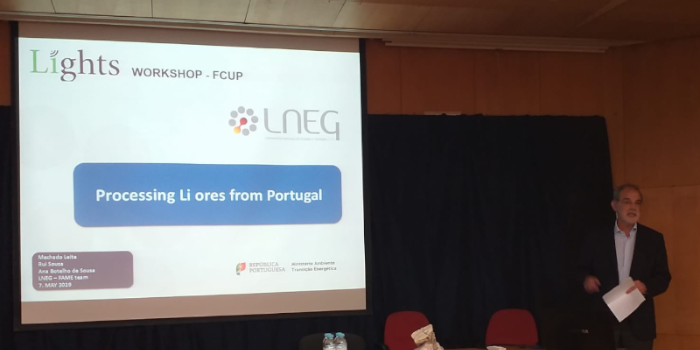The researchers of CARTIF Pedro Acebes and Jorge Calvo and the researcher of the Faculty of Sciences of the University of Oporto (FCUP) Luis Lima, who are part of the ESMIMET project team, have attended this Tuesday, May 7 in the city of Oporto a Workshop of the LIGHTS project called “Lightweight Integrated Ground and airborne Hyperspectral Topological Solution”, whose objective was to optimize the lithium exploration of hard rock deposits, overcoming the following technical challenges:
– Hyperspectral unmanned aerial flight (UAV-carried) for multi-scale remote detection.
– Acquisition and analysis of data in real time.
– Fusion of laboratory and field data through artificial neural networks.
The event, which was held at the Faculty of Sciences of the University of Oporto, brought together many experts from the metallurgy sector who addressed issues related to the production processes of different metals.
The LIGHTS Project aims to remotely detect deposits of lithium, as well as the hyperspectral characterization of the minerals related to this chemical element, together with in-situ lithium detection using laser-induced plasma spectroscopy (LIBS), intelligent mapping and the support for the understanding of lithium mineralization. This project is financed by the European program ERAMIN.
 For its part, the ESMIMET project has the ultimate objective of making the most of the mining resources of the northern and central areas of Portugal and Castilla y León, in order to design a common strategy. CARTIF and FCUP participate in this initiative.
For its part, the ESMIMET project has the ultimate objective of making the most of the mining resources of the northern and central areas of Portugal and Castilla y León, in order to design a common strategy. CARTIF and FCUP participate in this initiative.
In addition, Pedro Acebes and Jorge Calvo, along with FCUP researchers Fernando Noronha and Luis Lima, visited on Thursday, May 9 the facilities that the National Laboratory of Energy and Geology of Portugal (LNEG) has in Oporto. The objective of the visit was double. In the first place, they knew the facilities referred: the laboratory for the treatment of minerals (grinding mills, separating tables, screens, electromagnetic separators, etc.) and the pilot mineral processing plant, as well as its operation. On the other hand, the researchers proposed possible collaborations between the ESMIMET project and the LNEG in the future.





